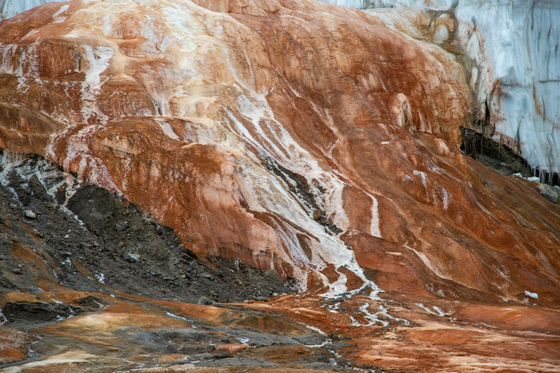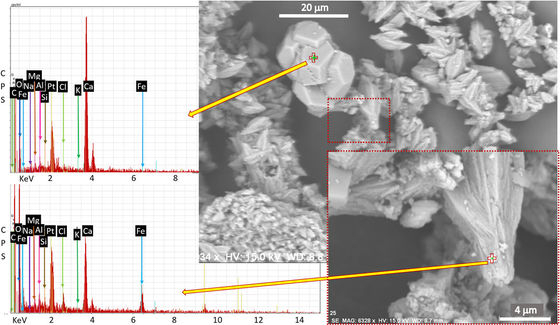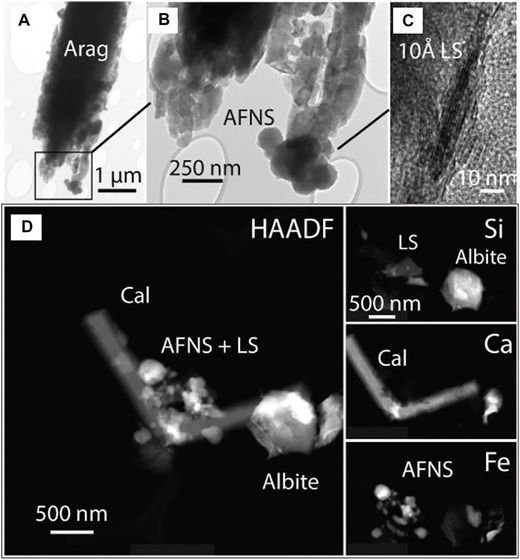The mystery of Antarctica's ``blood waterfall'' has been revealed over a century, and the discovery that throws a stone at the limit of life exploration technology on Mars

Antarctica's Taylor Glacier has a '
Frontiers | A Multi-Technique Analysis of Surface Materials From Blood Falls, Antarctica
https://doi.org/10.3389/fspas.2022.843174
Seeing red: Researchers uncover the century-old mystery of Blood Falls |
https://hub.jhu.edu/2023/06/26/blood-falls-mystery/
The Eerie Mystery of 'Blood Falls' in Antarctica Is Finally Solved : ScienceAlert
https://www.sciencealert.com/the-eerie-mystery-of-blood-falls-in-antarctica-is-finally-solved
Australian geologist Thomas Griffith Taylor discovered red water bubbling up from an Antarctic glacier in 1911 during the Terra Nova expedition, the famous British Antarctic expedition .
The water from this glacial fissure is clear at first, but it soon turns red and joins the rocks like a waterfall. Since its discovery, many scientists have been intrigued by the Blood Falls and conducted investigations, which revealed that there were microorganisms under the glacier and that the iron contained in the water was oxidized and turned red.

by
A research team led by Ken Livy, a material scientist at Johns Hopkins University, this time analyzed the substances collected from the waterfall of blood with a high-performance transmission electron microscope , making the water red.
These amorphous nanospheres, derived from ancient microbes living under glaciers, are 1/100th the size of human red blood cells. In addition to iron, it contains elements such as silicon, calcium, aluminum and sodium, a unique composition that causes water to turn red when exposed to oxygen and the heat of the sun.
Regarding the discovered nanospheres, Mr. Livy said, ``To become such a mineral, the atoms must be arranged in a very special crystal structure, but they are not crystals, so they can be used to examine solids in the sample.
Below are images of the samples taken by the research team with a scanning electron microscope and the results of analyzing the chemical composition of the samples.

And below is a picture of the particles of the sample taken at even higher magnification using a transmission electron microscope. Nanometer-scale analysis revealed the presence of tiny iron-rich spheres.

Beneath the glaciers that form the source of Blood Falls, there are ancient microorganisms that are believed to have lived for thousands of years to millions of years. Living in extreme conditions under thick glaciers with little oxygen, these microbes have attracted the attention of many astrobiologists studying extraterrestrial life.
However, the research team points out that this study poses new challenges for missions to search for extraterrestrial life. This is because the fact that we were able to elucidate the traces of microbial activity in detail only through advanced analysis means that the sensors and analyzers mounted on the unmanned spacecraft may overlook creatures that may inhabit the deep underground of Mars and other clues.
``Our research has revealed that spacecraft analysis cannot determine the nature of substances in the environment of the planet's surface, especially on cold planets like Mars.
Related Posts:
in Science, Posted by log1l_ks







